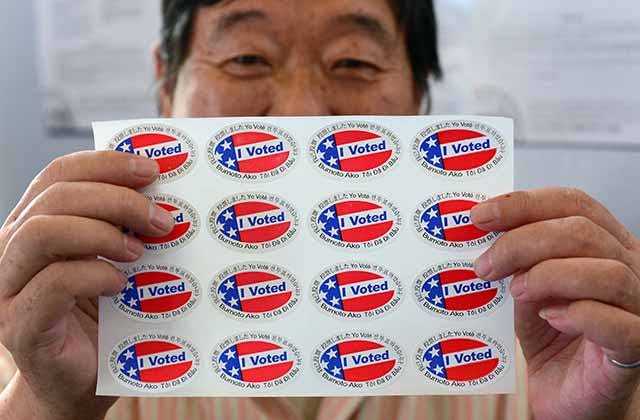America is a country that operates primarily through binaries. Citizen or non-citizen. Legal or illegal. Guilty or innocent. Therefore, it is not surprising that American politics is primarily viewed through a black and white binary. Conversations around elections often center solely around how policies will impact white or black voters. While there is no question that those two groups are essential to understanding America and its institutions, focusing solely on this binary neglects the key role that other minorities play in politics. Politicians would particularly benefit from paying more attention to Asian Americans. While only four percent of the electorate, Asian Americans are the deciding factor in many competitive races. According to Vox, during the 2018 midterm elections, Asian Americans voters made the difference in some of Orange County’s tightest districts, ones that flipped from Republican to Democrat.
So how exactly do Asian Americans vote? The picture has changed over time and remains slightly complicated. In 1992, the first year that data was collected on Asian American voting patterns, Vox reports that 55 percent of voting Asian Americans voted for George H.W Bush. By 2016, that trend had seemingly reversed, with 65 percent of Asian Americans voters voting for Hillary Clinton. This data, compounded with exit polls from 2018, seems to indicate that there has been a general shift towards the Democratic Party amongst Asian voters. Li Zhou, from Vox, suggests that one possible explanation lies with Donald Trump’s anti-immigrant rhetoric, which may have alienated Asian Americans. Alternatively, as UC Riverside’s Political Science Professor S Karthick Ramakrishnan proposes, Asian Americans are voting Democrat because their views align with the party’s positions on issues like government spending. According to Professor Ramakrishnan, a 2012 national Asian American survey showed that Asian Americans supported a bigger government that provided more services over a smaller limited government that provided few services.
However, it would be a mistake for politicians to view the shifting voting patterns as evidence of a solidified allegiance to the Democratic party. For one, a 2018 Asian American Voter Survey found that there was low party identification amongst Asian Americans. According to New York magazine, Asian Americans are likely to register as independents. Furthermore, the demographic is extremely diverse and far from monolithic. Many Asian Americans are more likely to vote Republican than they are to vote Democrat. According to a 2018 study by APIAVote, while only 14 percent of Japanese Americans viewed the Republican Party favorably, 48 percent of Fillipino and Vietnamese Americans looked upon the party favorably.
Additionally, while many Asian Americans have been put off by Trump’s anti-immigrant rhetoric, it hasn’t been a universal deterrent. As the educated ‘model minority,’ many high-earning Asian Americans are primarily concerned with economic policies. For that reason, the Republican Party hopes to gain the support of Indian Americans, a group that Politico says registers and votes in high numbers. Trump even attended a rally with India’s Prime Minister Narendra Modi in September. At the rally, Trump spoke to a crowd of 50,000 Indians from across the country, and said, “You enrich our culture. You uphold our values. You uplift our communities. You are proud to be Americans and we are truly proud to have you as Americans.” According to Politico, his praise received a standing ovation. Thus, while Indian Americans broadly vote with Democrats, if the party ignores the demographic, while Republicans cater to it, there may be serious consequences in swing districts with significant Indian populations.
For all the importance that Asian Americans have in key districts, the group’s voting turnout is lower than other groups. Ella Nilsen from Vox reports that this causes a self-fulfilling loop in which campaigns fail to engage with Asian Americans because they expect low turnout and then Asian Americans don’t turn out because of the lack of political engagement. If candidates want to gain an edge in competitive districts, then they need to move away from a simple black or white binary. They need to look away from larger majorities and consider how politically neglected minorities like Asian Americans can make a razor thin margin just a little bit larger. And they need to realize that in this politically charged climate, that little bit makes all the difference.






